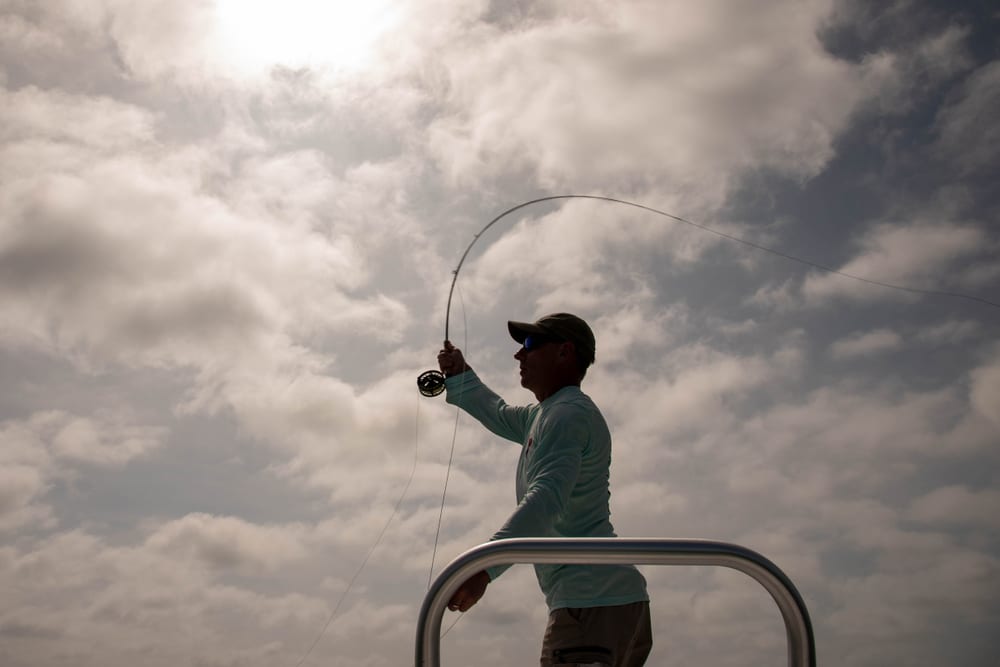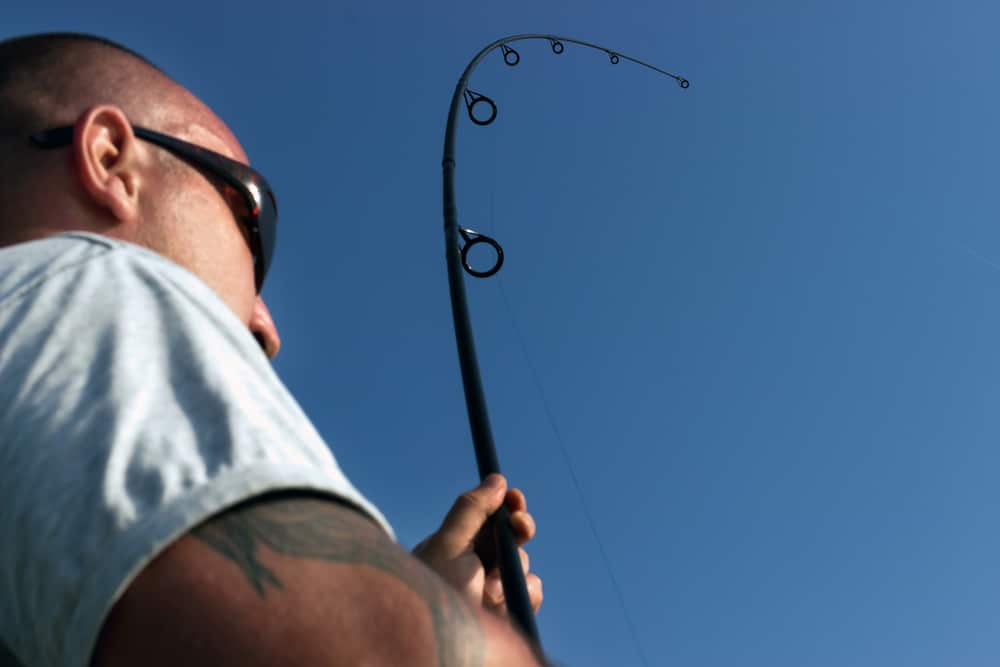If you have been shopping for fishing rods, you have undoubtedly come across the terms power and action.
The main difference between power and action in fishing is that power is the amount of power it takes to make the fishing rod’s tip bend. Furthermore, action is the rating on a fishing rod that tells us where the rod bends when this power is applied.
You also have likely wondered what they mean and why they are so confusing.
This post explains what both “power” and “action” mean and gives examples of how they differ.
We also include some important points so that choosing the best fishing rod for your fishing adventures is less mysterious and more factual.
Keep reading as we welcome you to the family of anglers who love tossing lures and battling big fish.

Contents
What is power in a fishing rod?
Power is another word for energy or force, and it refers to the amount of power, energy, or force that it takes to cause the fishing rod’s tip to bend.
Why power is important – in fishing:
Rod power translates into feel when you fish.
A stiff rod takes a lot of power to bend the tip, and that means that what happens at the hook or lure end of the line is more difficult to detect with your hands.
A fishing pole that is more flexible or easier to bend sends a lot of messages up the line to your hands.
So, a fishing rod’s power rating is really about how sensitive the rod is and how it translates what happens at the hook to your hands.
Was that a bite, or did the sinker just bounce along the bottom?
Power is also more than just the amount of weight or energy it takes to bend the rod. It also relates to line diameter and lure weight.
Fishing rod power is rated in three basic settings:
- Light – bends the easiest
- Medium – takes more weight or energy to bend the rod
- Heavy – takes the most weight or energy to bend the rod
There are power rating that fall in between each of these three main ratings – ultra-light, medium light, medium-heavy, etc.
The same logic applies to each sub-rating.
Power and Line or Lure Selection
The lower or lighter the power rating on a rod, the thinner and lighter both the line diameter and lure weight the rod will handle.
The heavier the power rating of the fishing rod, the thicker and heavier the line and lure weight are.
This information is generally printed on the rod’s blank.

What is action in a fishing rod?
The action rating on a fishing rod is simply where the rod bends when power is applied to it.
To make things more confusing, rod action is also rated in three general categories:
- Light
- Medium
- Heavy
There are also subcategories of action too – ultra-light, medium light, medium-heavy, etc.
Generally:
A light action – bends more of the rod. Expect a rod rated for light action to bend from the tip of the rod to the middle of the rod.
A medium action rod will bend (usually) at the top 1/3 of the rod or to the first two line guides, including the tip of the rod.
A heavy action rod will bend at just the tip, which is anywhere from six inches to one foot.
Power and Action: How do they compare on a fishing rod?
Like the parts of an engine, power and action work together to create strength and durability and sensitivity and feel.
When you cast, the power rating will affect how accurate the rod is and the weight of the line and the lure or bait ball.
Heavy power – Light Action equals a stiff rod with more bend, but it also holds heavy line, such as braid, and bigger lures.
These rods are generally 5-10 feet long and used to target bigger fish.
Why bigger fish? A bigger fish had more power to bend the rod and the light action transfers the power and weight of the fish further down the rod’s blank so more of the energy is distributed along the rod’s blank rather than just at the tip.
Light power and light action is a rod that is very flexible.
These are generally a little longer 7-10 feet in length, and they hold thinner line and lighter lures.
These are ideal for smaller fish since smaller fish have less power or strength to bend the rod; you need the extra sensitivity provided by the light power to feel the bite.
FAQ
How does the rod material affect action and power?
Rod material can be wood, graphite, or fiberglass.
Wood is not used very often anymore and is mostly found in either cane poles or fly rods.
Graphite is the stiffest of the three blank material options, and it translates the most and more subtle hook action to the hands.
Fiberglass is more flexible than graphite and used mostly for bigger fish where you do not need the exceptional translation offered by graphite.
Note: Translation is the transfer of physical hook activity – bites – up the line, through the rod, and to your hands.
How do I choose the right action for my fishing rod?
Action relates to where the rod bends under pressure.
The lighter the action, the bigger the fish.
A light power and light action rod is ideal for smaller fish like bluegill and panfish.
A heavy power and light action rod is ideal for bigger fish like salmon.
How do I choose the right power for my fishing rod?
Power is a reflection of the strength it takes to bend the rod.
Light power for smaller fish. Heavy power for bigger fish.
You combine power with rod action to create a tool that takes X amount of energy to bend the rod, and that translates that power into action – where the rod bends.
A bigger fish can snap a rod with heavy power and heavy action – the rod bends under greater strength and only at the tip.
When you have a heavy or big fish on the line, you want the fish’s power – its strength and weight to transfer to more of the rod’s blank.
Doing so moves the pressure the fish puts on the rod’s blank from the tip (heavy action) to the entire rods length (light action.)







